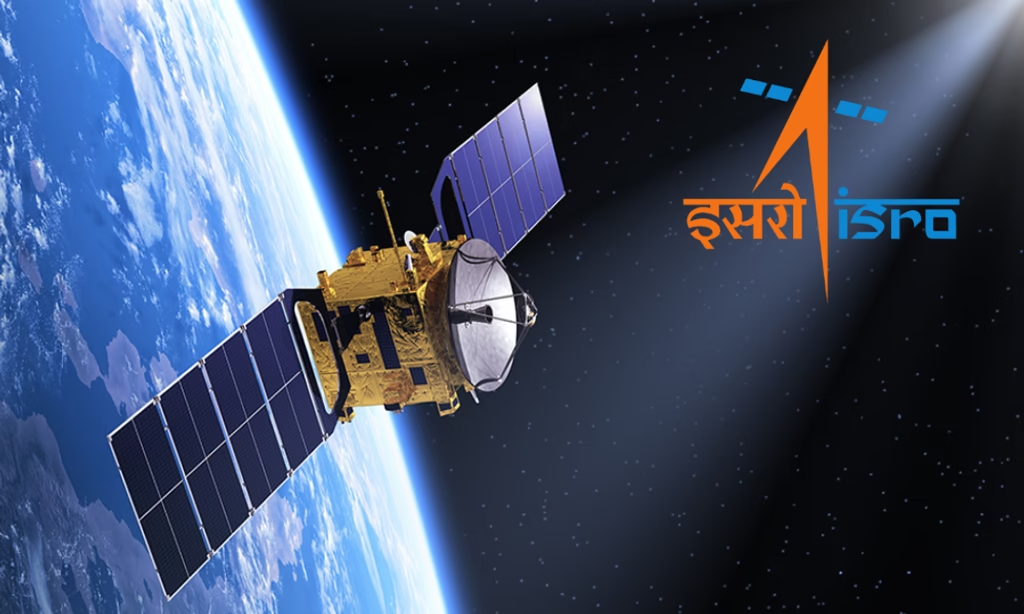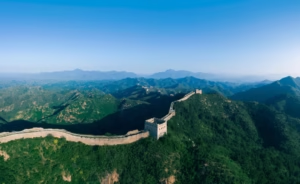Diversity of India:Geographical and Religious…
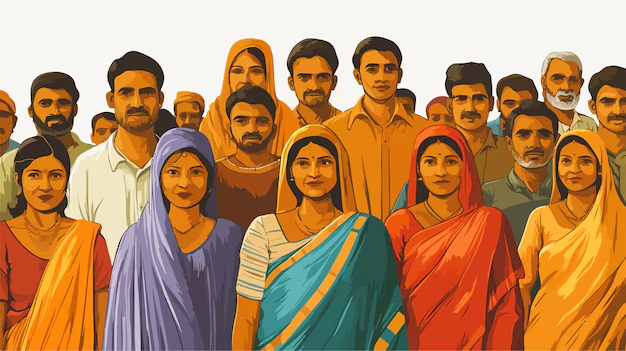
Introduction
India is a land of remarkable diversity — a nation where multiple cultures, religions, languages, and traditions coexist in harmony. Often referred to as a “subcontinent,” India’s diversity is not just a feature but the very essence of its identity. This vast and varied land embodies the true meaning of unity in diversity, showcasing how differences can become strengths. The unique blend of ancient heritage and modern innovation, regional distinctions and national unity, makes India one of the most diverse and intriguing countries in the world.
1. Geographical Diversity
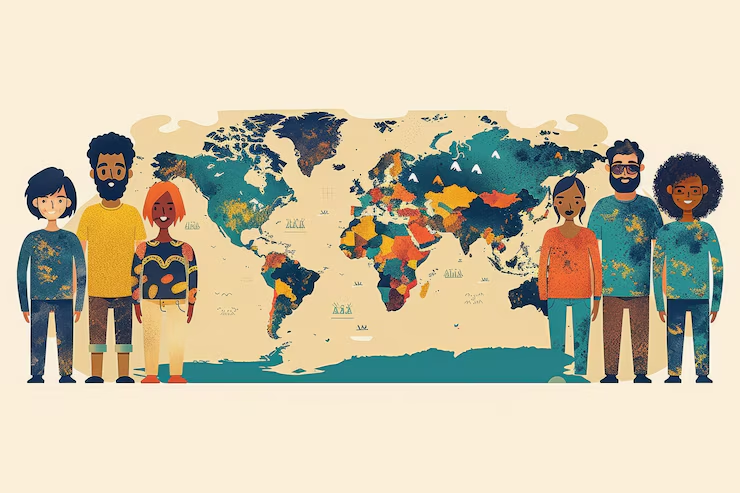
A Land of Contrasts
India stretches from the snow-covered peaks of the Himalayas in the north to the tropical beaches of Kerala in the south, from the Thar Desert in the west to the lush rainforests of the northeast. This geographical variety shapes the lifestyles, occupations, and cultures of its people.
- Mountains: The Himalayas are not only a natural frontier but also home to unique flora, fauna, and cultures like those of Ladakh and Sikkim.
- Plains and Plateaus: The Indo-Gangetic plain is one of the most fertile and densely populated areas, while the Deccan Plateau offers a different cultural and ecological experience.
- Coasts and Islands: The coastal regions and islands like the Andaman and Nicobar have distinct languages, cuisines, and traditions.
2. Linguistic Diversity
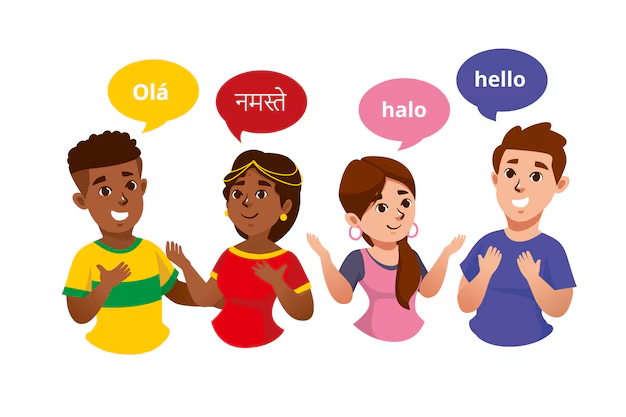
A Multilingual Nation
India is home to 22 officially recognized languages under the Eighth Schedule of the Constitution and more than 1,600 dialects. Hindi and English are the two official languages at the central level, but states have their own official languages too.
- Dravidian Languages: Spoken mainly in South India (Tamil, Telugu, Kannada, Malayalam).
- Indo-Aryan Languages: Dominant in the northern, central, and western regions (Hindi, Bengali, Marathi, Gujarati, Punjabi).
- Tibeto-Burman and Austroasiatic Languages: Found in the northeastern states and tribal belts.
This linguistic richness is visible in education, media, cinema, and daily communication. It also contributes to literary diversity through poetry, folklore, and regional literature.
3. Religious Diversity
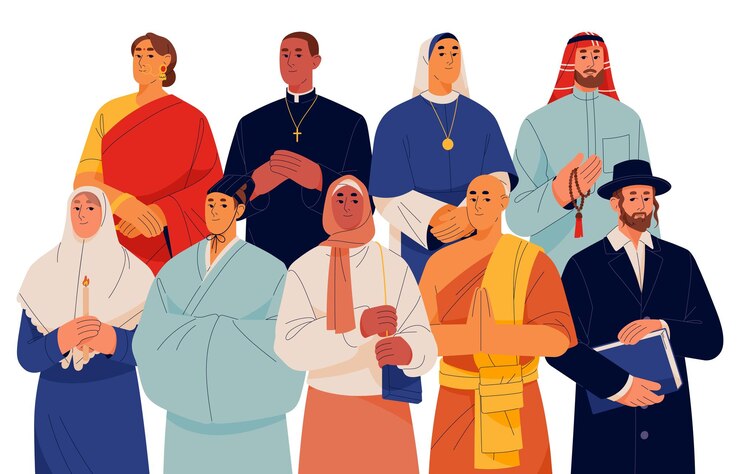
The Birthplace of Major Religions
India is the cradle of four major world religions: Hinduism, Buddhism, Jainism, and Sikhism. It is also home to large populations of Muslims, Christians, Jews, Zoroastrians, and Baháʼís.
- Hinduism: The majority religion, deeply embedded in India’s festivals, customs, and philosophy.
- Islam: India has the third-largest Muslim population in the world.
- Christianity: Particularly prominent in states like Kerala, Goa, and the Northeast.
- Sikhism: Originated in Punjab, emphasizing equality, community service, and devotion.
- Others: India’s Jewish and Zoroastrian communities, though small, are historically significant and culturally rich.
Despite occasional tensions, religious coexistence and secular values are integral to the Indian ethos.
4. Cultural Diversity
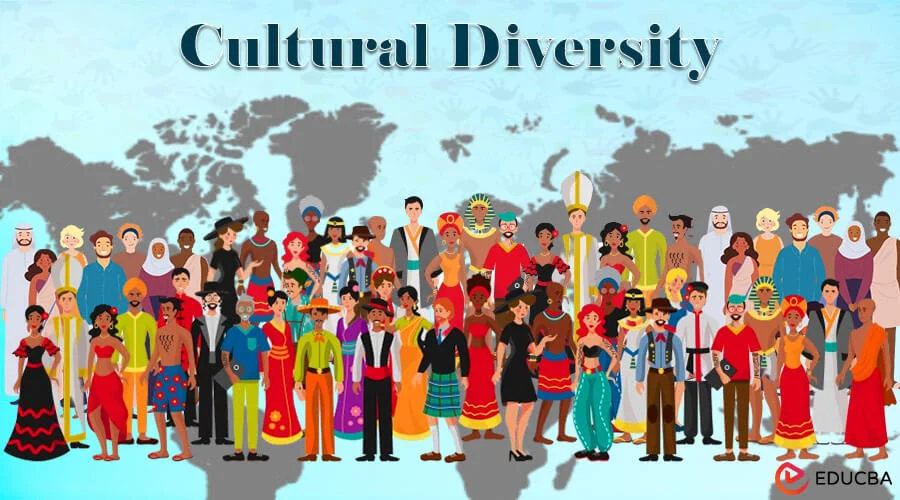
Festivals and Celebrations
Every month brings a festival celebrated by different communities with vibrant rituals and colors. These festivals, often rooted in mythology, agriculture, or seasonal changes, showcase India’s pluralistic spirit.
- Diwali, Holi, Dussehra: Major Hindu festivals celebrated nationwide.
- Eid-ul-Fitr, Eid-ul-Adha: Celebrated by Muslims across India.
- Christmas, Easter: Observed by Christians with regional variations.
- Guru Nanak Jayanti, Baisakhi: Important Sikh festivals.
- Bihu, Onam, Pongal, Navroz: Regional festivals reflecting local traditions.
Each festival is marked by unique customs, cuisine, music, and dress, reflecting the unity in diversity that defines Indian society.
5. Ethnic and Racial Diversity
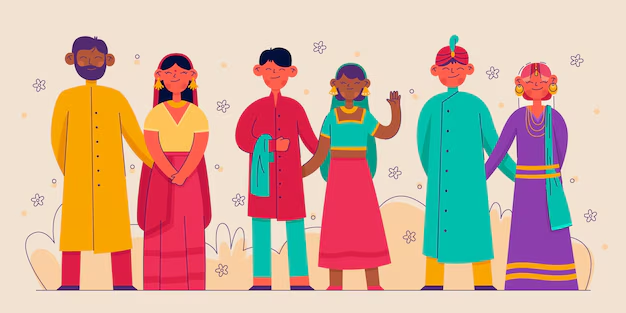
Ancestral Mosaic
India’s population is an amalgamation of several racial and ethnic groups:
- Indo-Aryans: Predominant in North and Central India.
- Dravidians: Concentrated in South India.
- Mongoloid Groups: Found mostly in the Northeastern states.
- Tribal Communities: Spread across the country, particularly in Madhya Pradesh, Chhattisgarh, Odisha, and the Northeast.
Each group has its own language, clothing, rituals, and artistic expressions, contributing to the richness of Indian identity.
6. Culinary Diversity

A Flavorful Journey
Indian cuisine is a mirror of its diversity, shaped by climate, history, religion, and local produce. The variety of spices and cooking methods is staggering.
- North India: Known for wheat-based breads, dairy-rich dishes like paneer, and Mughlai cuisine.
- South India: Famous for rice, coconut, tamarind, and dishes like dosa, sambar, and idli.
- East India: Rich in fish dishes, sweets (like rasgulla), and rice-based meals.
- West India: Offers everything from spicy Rajasthani thalis to sweet Gujarati snacks.
Food habits often reflect religious practices too — for instance, vegetarianism among Jains and Hindus, or halal preparations among Muslims.
7. Artistic and Architectural Diversity
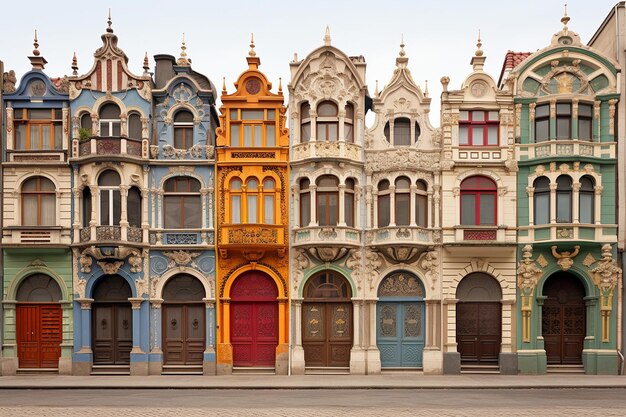
A Cultural Powerhouse
India’s artistic expressions span centuries and regions:
- Dance: Classical forms like Bharatanatyam, Kathak, Kathakali, Odissi, and Manipuri are regionally rooted. Folk dances like Bhangra, Garba, and Lavani reflect local life and festivals.
- Music: Ranges from Hindustani and Carnatic classical music to diverse folk traditions and Bollywood.
- Architecture: From the rock-cut caves of Ajanta to Mughal marvels like the Taj Mahal, and temple complexes in Tamil Nadu, India’s architectural diversity is legendary.
- Crafts and Textiles: Each region boasts unique arts — Madhubani painting (Bihar), Pashmina shawls (Kashmir), Bandhani (Gujarat/Rajasthan), and Chikankari (Lucknow)
8. Political and Administrative Diversity
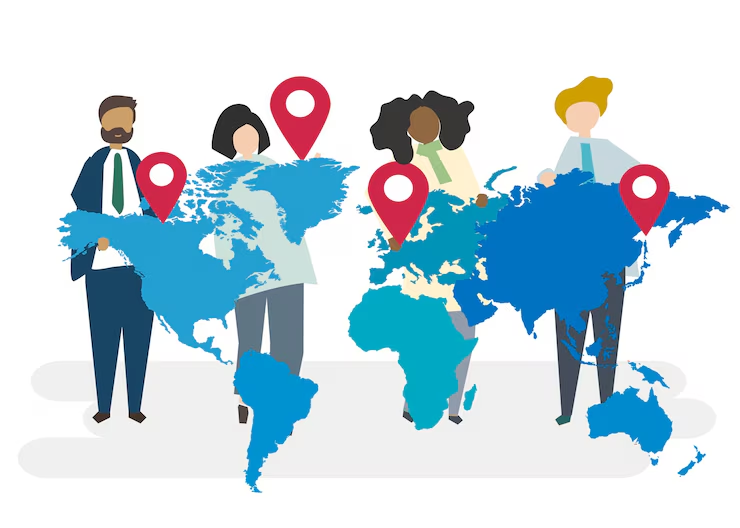
Federal Structure with Unity
India’s federal system allows individual states significant autonomy in governance, language, and culture. Each of the 28 states and 8 Union territories has its own legislature, language policies, and cultural identity.
- Bilingual and Multilingual States: States like Maharashtra, Karnataka, and West Bengal are linguistically rich.
- Special Status: States like Jammu & Kashmir (before 2019) and regions under Sixth Schedule (Northeast) enjoy unique administrative arrangements due to their cultural and historical background.
This system enables local identities to flourish within a unified national framework.
9. Educational and Philosophical Diversity

Knowledge Through the Ages
India’s educational traditions range from ancient Gurukuls and universities like Nalanda and Takshashila to modern IITs and IIMs. Its philosophical diversity is just as wide:
- Spiritual Schools: Vedanta, Yoga, Buddhism, Jainism, and Bhakti movements.
- Modern Thinkers: Vivekananda, Ambedkar, Tagore, and Nehru have contributed to India’s philosophical and educational outlook.
- Languages of Instruction: Education is imparted in multiple languages — English, Hindi, Tamil, Bengali, and more — reflecting the nation’s linguistic inclusivity.
10. Social and Economic Diversity
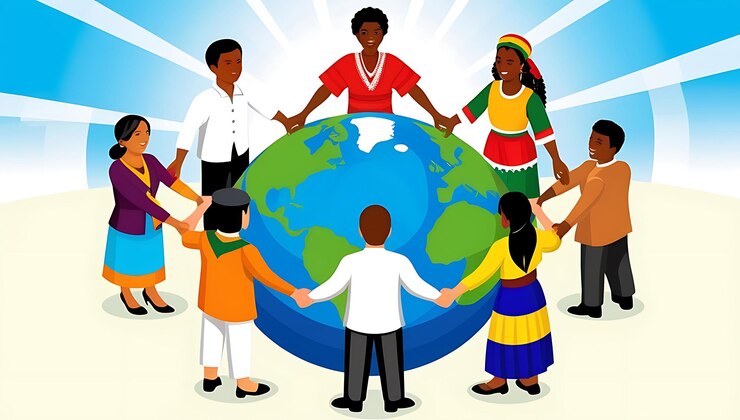
A Country of Contrasts
India’s social fabric includes diverse caste, class, and community dynamics. The caste system, while constitutionally abolished in its discriminatory forms, still influences social interactions and access to resources.
- Rural vs Urban: Life and opportunities vary greatly between villages and cities.
- Economic Inequality: From billionaires in metropolitan cities to farmers in remote villages, economic diversity is stark yet evolving.
- Gender Roles and Empowerment: Varies widely by region, religion, and class, with strides in women’s education and participation in public life.
Government policies like reservations and affirmative action aim to bridge these gaps.
Conclusion
India’s diversity is not merely a demographic feature; it is a dynamic, living force that shapes its identity, governance, and global image. While this diversity brings challenges—linguistic tensions, religious frictions, regional disparities—it also fosters resilience, creativity, and a deep cultural richness.
The Indian model of unity in diversity teaches the world how multiple identities can coexist peacefully, offering a powerful vision for multiculturalism and democratic coexistence. Embracing this diversity with mutual respect and inclusivity is the way forward in preserving India’s pluralistic soul.

